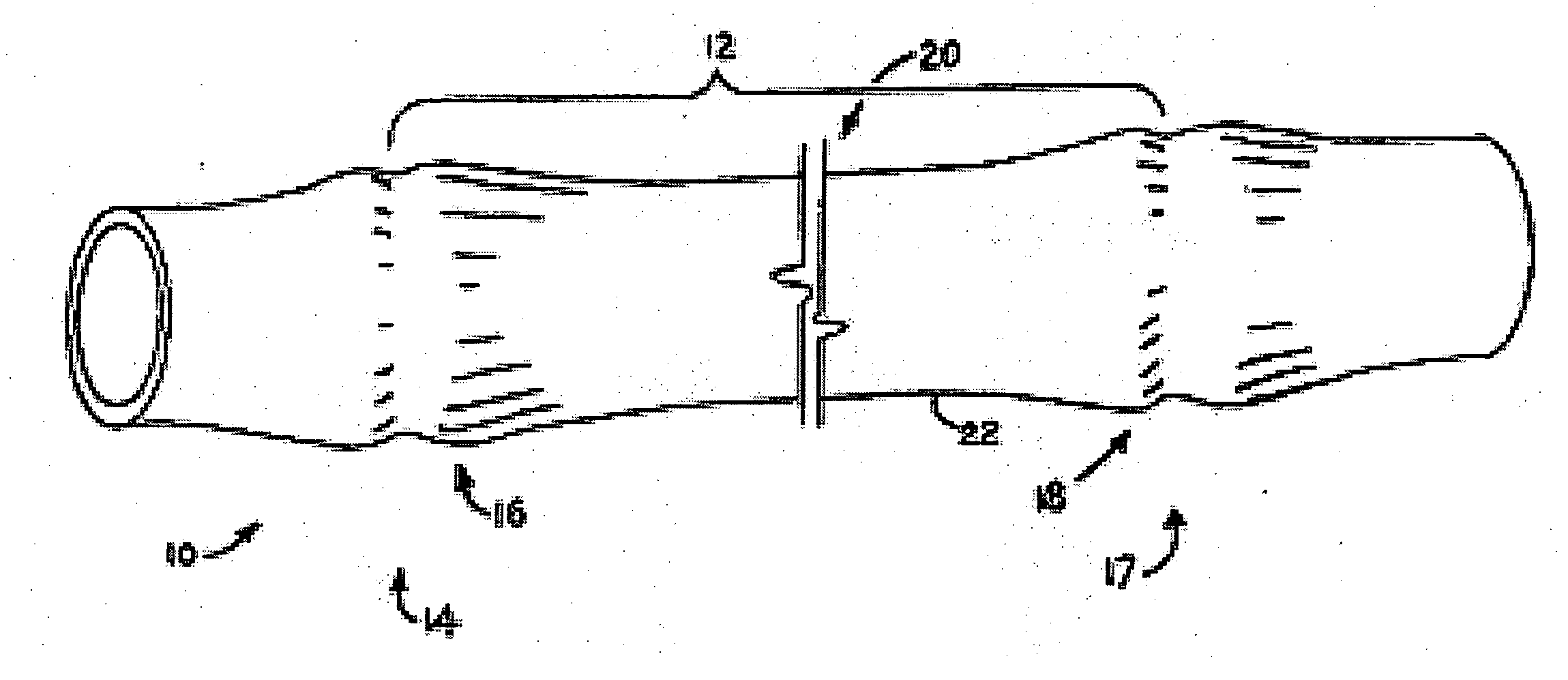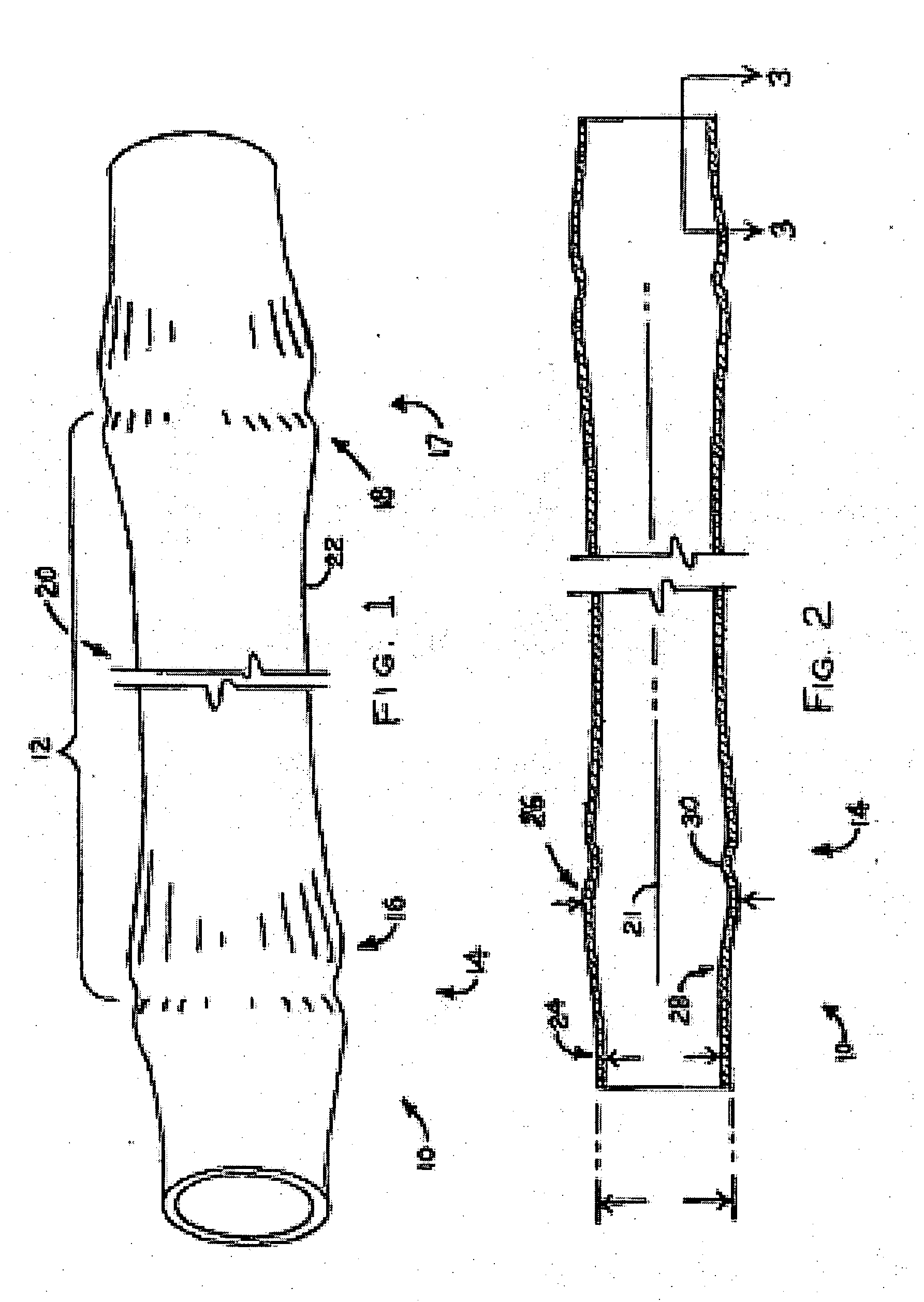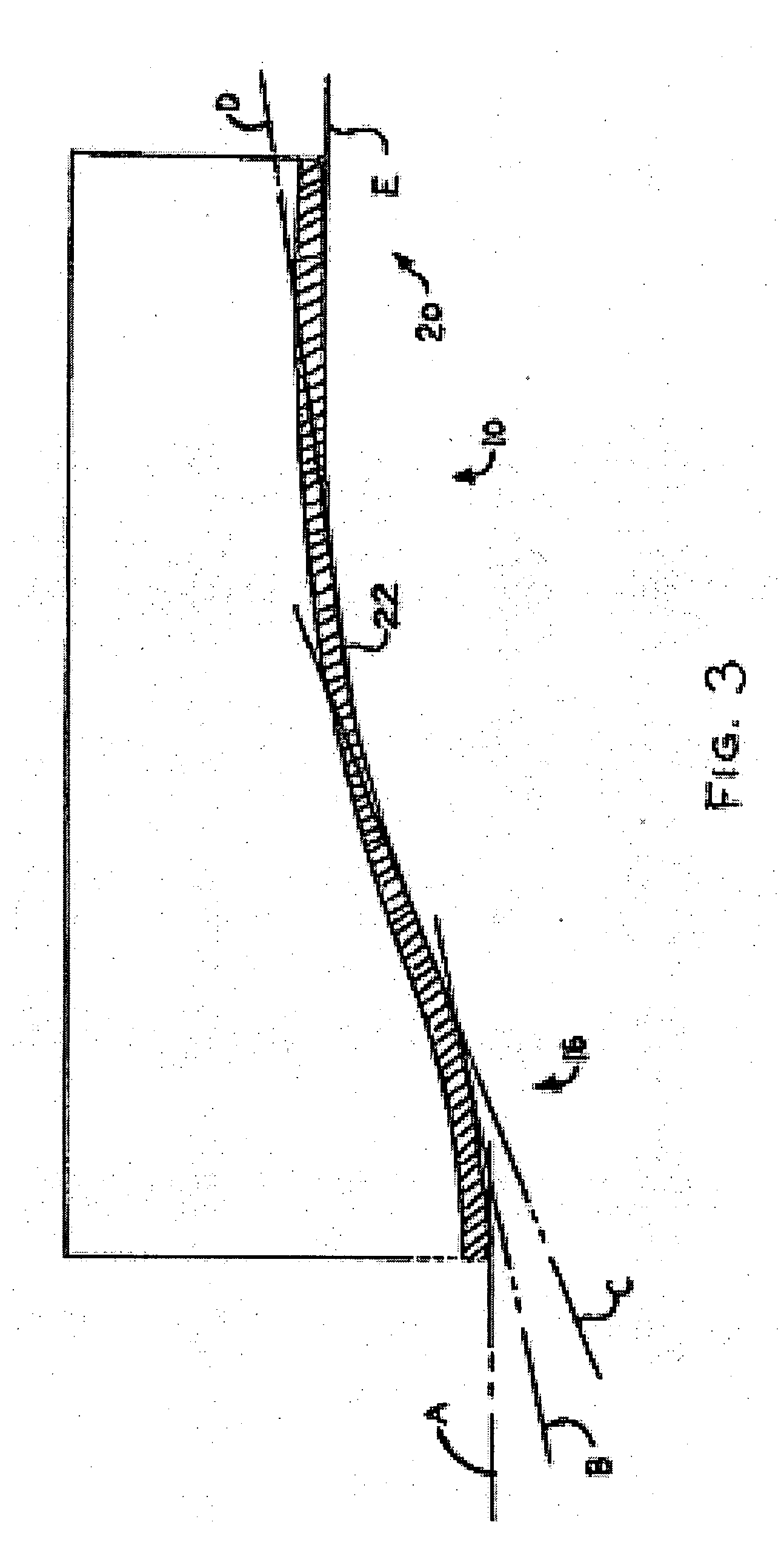Decorative hollow tubing for use in furniture manufacture and method for manufacturing
a technology for decorative hollow tubing and furniture, which is applied in the field of decorative hollow tubing manufacturing methods, can solve the problems of undesirable attributes of cast construction, inability to achieve realistic effects, and inability to meet the needs of furniture, and achieve the effect of providing strength and durability of construction
- Summary
- Abstract
- Description
- Claims
- Application Information
AI Technical Summary
Benefits of technology
Problems solved by technology
Method used
Image
Examples
Embodiment Construction
[0018] For illustrative purposes, FIGS. 1 and 2 of the drawings show a length of a stock elongate structural material 10 simulating bamboo. Designs, shapes and ornamentation other than bamboo can be created using the disclosed method, so long as the desired ornamentation is cylindrical in nature with varying radii extending from the longitudinal axis of the tubing. The stock material 10 is formed from stock tubing having cylindrical, annular configuration prior to being reformed to take on the nodes and taper of a culm of natural bamboo. The tubing is thin walled and malleable and has been cold worked to be configured to include at least one section, and preferably at least one additional abutting section, each corresponding to a section of a natural stalk of bamboo, where a section will be understood to extend between adjacent nodes. Thin walled signifies that combined thicknesses of the wall of the finished generally tubular or annular stock material simulating bamboo, taken at tw...
PUM
| Property | Measurement | Unit |
|---|---|---|
| perimeter | aaaaa | aaaaa |
| length | aaaaa | aaaaa |
| radii | aaaaa | aaaaa |
Abstract
Description
Claims
Application Information
 Login to View More
Login to View More - R&D
- Intellectual Property
- Life Sciences
- Materials
- Tech Scout
- Unparalleled Data Quality
- Higher Quality Content
- 60% Fewer Hallucinations
Browse by: Latest US Patents, China's latest patents, Technical Efficacy Thesaurus, Application Domain, Technology Topic, Popular Technical Reports.
© 2025 PatSnap. All rights reserved.Legal|Privacy policy|Modern Slavery Act Transparency Statement|Sitemap|About US| Contact US: help@patsnap.com



